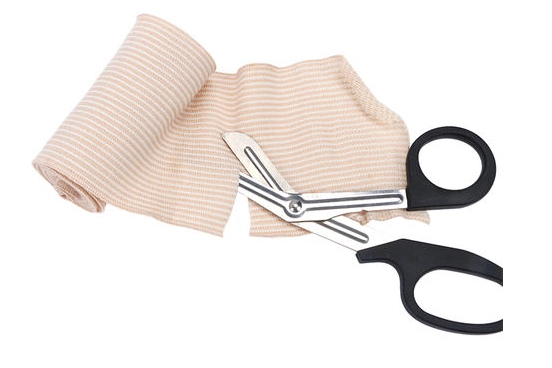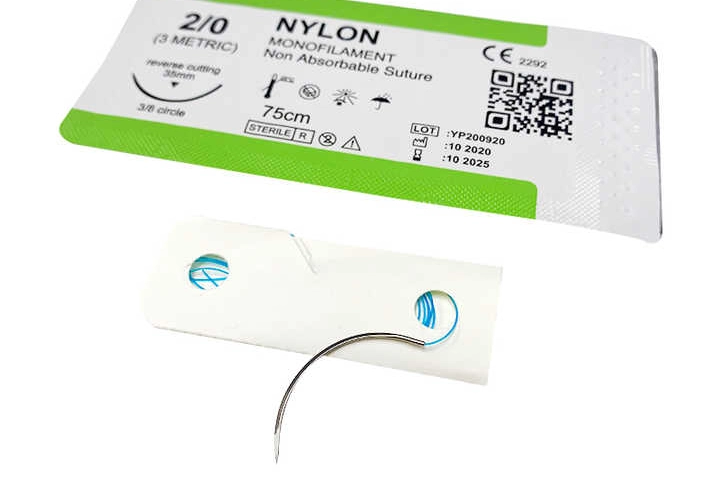
Understanding Grip Bandages
What is a Grip Bandage?
Grip bandages are cohesive bandages that give support and compression to parts of the body such as joints and muscles in hospitals too, during sporting or animal care activities.
Bandages used for grip are generally constructed from materials such as cotton or man-made fibers without latex or spandex materials, for flexibility and elasticity to curve around the body shape without rendering unequal pressure—a quality making them appropriate for use from preventing harm to aiding rehabilitation procedures and other healing purposes.
Key Features of Grip Bandages
Grip bandages have special traits that make them different from other bandage types. They’re designed to cling to themselves, no clips or pins needed. This keeps them snugly in place. They won’t slip off when you’re moving around. They’re also built to be light and airy. That perk boosts comfort when you wear them for hours.
One of the remarkable features is that they can be used multiple times. Most of these bandages are washable. You can reuse them without reducing their ability to stretch and stick. It’s cost – effective and environmentally friendly.
Grip bandages come in all sorts of types. They’re available in different sizes and widths to fit various needs. You’ve got narrow strips for fingers. And there are wider ones too.
Types of Grip Bandages and Their Applications
There are types of bandages with specific purposes, for different needs.
- Elastic Bandages: These provide moderate compression and are commonly used for sprains or strains.
- Cohesive Bandages: Known for their self-adhesive properties, these are ideal for securing dressings or providing light support.
- Compression Bandages: These offer higher levels of compression and are often used in managing conditions like varicose veins or edema.
- Specialized Sports Bandages: Designed specifically for athletes, these bandages offer extra durability and flexibility during rigorous activities.
Various types have functions while also aiming to offer assistance and safeguarding in common.
When to Use a Grip Bandage for Injury Prevention
Before Physical Activities
Prior to starting activities employing a cohesive bandage can aid in averting injuries by providing stability to susceptible regions, like ankles or wrists. Athletes frequently use this technique to wrap these body parts with a cohesive grip bandage to lessen stress during movements.
The tightness of the bandage enhances blood flow, to the muscles before engaging in activity and reduces the chances of straining or tearing them.
High-Risk Tasks
Some jobs require movements that strain certain body parts over time. For instance, construction workers often wear support braces on their knees. Elbows to help them when lifting heavy objects or kneeling, for extended periods.
Individuals who work in jobs that require labor can find these bandages helpful in preventing muscle strains from repetitive movements.
Post-Injury Support
Support bandages are crucial for treating injuries once they occur. They help cover the affected areas and promote healing following fractures or sprains. For example, wrapping a stretchable bandage around the injury can ease swelling. It also provides the necessary pressure to support recovery.
These bandages work well for securing ice packs or heat pads during therapy sessions providing pressure to help reduce inflammation and promote healing.
Pet Care
Bandages aren’t for humans—they’re commonly used in caring for animals too especially in veterinary settings. Pets that are healing from surgeries or injuries often need bandages to protect their wounds or joints. The cohesive quality of bandages is perfect, for this task because they stick securely without clinging to fur.
Besides treating wounds in humans and animals with care and attention these special bandages can also be applied to pets’ paws to shield them from potential dangers such, as uneven surfaces and harsh weather conditions.
To make the most of grip bandages in situations such, as sports activities or caring for pets while keeping safety and comfort in mind.
Why Use a Grip Bandage?
Enhanced Stability
Grip bandages deliver robust reinforcement to hurt or delicate body zones. Their sticky, stretchy material allows them to conform snugly around joints, muscles, and other body parts. This keeps everything securely locked in position. Such stability proves vital for athletes or people healing from injuries. It avoids actions that might aggravate the damage. By keeping alignment and lessening pressure on affected areas grip bandages are essential, in avoiding additional harm.
Pain Relief
The use of a grip bandage offers an advantage in pain reduction by the compression which may help diminish swelling and inflammation that is generally present with injuries like sprains or strains. Furthermore, the constant pressure of the bandage will help raise blood flow to the injured location that helps heal the injury quicker while inhibiting pain as well. They are not effective in giving immediate relief but play a valuable role, in bringing about long-term healing.
Slip Resistance
Self-adhering bandages are created to stick to themselves and not need any other clips or fasteners that guarantee they won’t fall off during exercise or daily movement, for example, sports or household chores, and give users feelings of security and confidence that they will stay securely in place.
Breathability
Grip bandages are usually airy, keeping you comfy even when worn for a long time. The airiness of the material stops sweat from piling up under the bandage. That cuts down on skin annoyance or unease. Because of this perk, they’re great for folks who need to keep a bandage on all day.
Cost-Effective
Grip bandages are not only efficient but also economical options to keep for long-term use because they can be washed and yet continue to be elastic and sticky effectively in the long term without needing to be replaced frequently. This is particularly helpful for those who need ongoing support, for chronic conditions or ongoing healing processes.
Introducing Medco’s Grip Bandage Solutions

Why Choose Medco for Your Injury Prevention Needs
Medco has built a reputation for being a reliable supplier of top-notch medical products, like grip bandages that are crafted for peak performance and user comfort.
High-Quality Materials for Optimal Support
Medco’s high-quality bandages are made from top-tier materials to guarantee lasting durability and efficiency. The elastic fibers incorporated in their design offer uniform compression while allowing for movement. These materials are hypoallergenic too making them ideal for those, with skin or allergies.
Trusted by Professionals Across Various Fields
Medco is well known in fields for providing dependable support and injury prevention solutions that professionals trust in various sectors like sports for boosting performance or healthcare for patient treatment management; their grip bandages are highly favored due, to their proven efficacy and top-notch quality standards.
When you opt for Medco’s grip bandage options you can count on support designed to cater to a variety of requirements – be it, for securing joints during intense sports activities or offering therapeutic compression during the healing process. Please contact us for your needs.
FAQ
Q: Why are grip bandages increasingly marketed for non-athletes?
A: Growing awareness of ergonomic health in sedentary workplaces (e.g., preventing carpal tunnel syndrome) and aging populations seeking joint support has expanded the consumer base.
Q: What industries are driving the demand for grip bandages?
A: The fitness, combat sports (e.g., boxing, MMA, taekwondo), and rehabilitation sectors are key drivers. Increased participation in high-intensity training and awareness of injury prevention in professional athletics have boosted adoption.




